Attached files
| file | filename |
|---|---|
| 8-K - FORM 8-K - ACI WORLDWIDE, INC. | c56823e8vk.htm |
Exhibit 99.1

| ACI INVESTOR PRESENTATION MARCH 2010 |
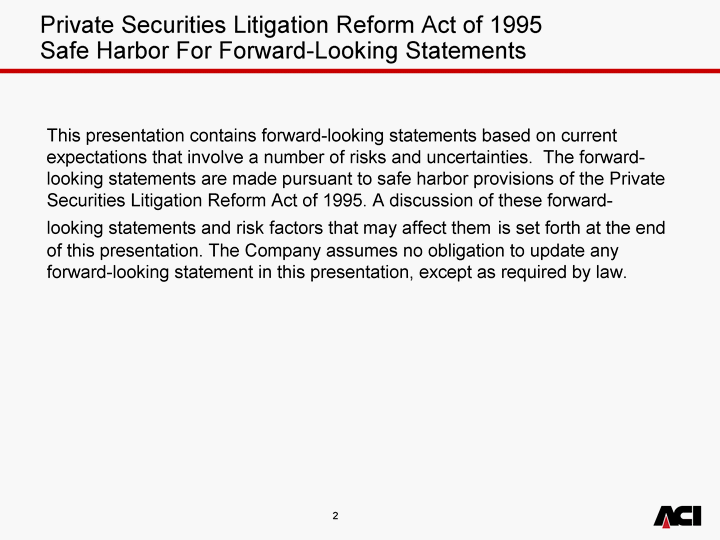
| This presentation contains forward-looking statements based on current expectations that involve a number of risks and uncertainties. The forward- looking statements are made pursuant to safe harbor provisions of the Private Securities Litigation Reform Act of 1995. A discussion of these forward- looking statements and risk factors that may affect them is set forth at the end of this presentation. The Company assumes no obligation to update any forward-looking statement in this presentation, except as required by law. Private Securities Litigation Reform Act of 1995 Safe Harbor For Forward-Looking Statements |

| Agenda Who is ACI ACI's Marketplace Opportunity Product Overview Financial Summary 3 |

| Tamar Gerber, Vice President, Investor Relations & Financial Communications |

| 5 A global company with customers in 92 countries Strategic Centers Regional Sales Office Distributors/Sales Agents Country with ACI customers |

| Global Market Trends and Drivers Our target market driven by growth in electronic payment transaction volumes Consolidation creates very large scale needs And inefficient platform redundancies Intense focus on fraud and risk management Continued desire to reduce costs and increase productivity Search for new revenue sources Globalization needs 6 Overall market drivers remain positive for ACI |

| ACI Product History 1975 1982 1985 1990 1995 2000 2005 2008 BASE24-atm TRANS24 Payments Manager ICE Smart Chip Manager Proactive Risk Manager OCM24 MTS ASx Trade Finance Enterprise Banker ON/2 OpeN/2 Retail Banking Wholesale Banking Risk Management Tools & Infrastructure BASE24-eps Network Express ASSET BASE24-pos Automated Case Management WebGate Enterprise Enrollments |

| ACI Market Share 8 BANKING 22 of the top 25 in the U.S. 4 of the top 5 in Brazil 3 of the top 5 in Australia 9 of the top 10 in Canada 7 of the top 10 in Saudi Arabia 4 of the top 10 in Malaysia 42 customers in the top 100 world banks 7 of the top 10 in India 7 of the top 10 in the U.K. 4 of the top 10 in Mexico 4 of the top 5 in Indonesia 4 of the top 5 in Thailand 4 of the top 5 in South Africa 3 of the top 5 in Greece 3 of the top 5 in Netherlands Over 140 processors globally PROCESSORS 9 of the top 25 global retailers MERCHANT RETAIL |
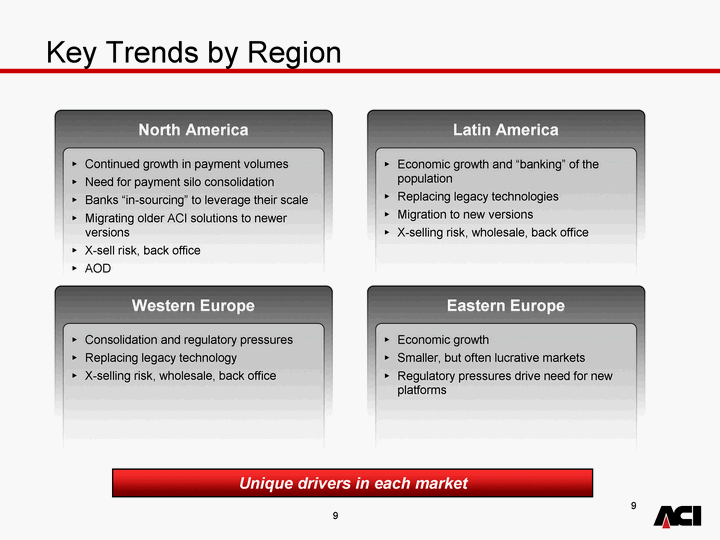
| Latin America Economic growth and "banking" of the population Replacing legacy technologies Migration to new versions X-selling risk, wholesale, back office Key Trends by Region 9 North America Continued growth in payment volumes Need for payment silo consolidation Banks "in-sourcing" to leverage their scale Migrating older ACI solutions to newer versions X-sell risk, back office AOD Unique drivers in each market Eastern Europe Economic growth Smaller, but often lucrative markets Regulatory pressures drive need for new platforms Western Europe Consolidation and regulatory pressures Replacing legacy technology X-selling risk, wholesale, back office |
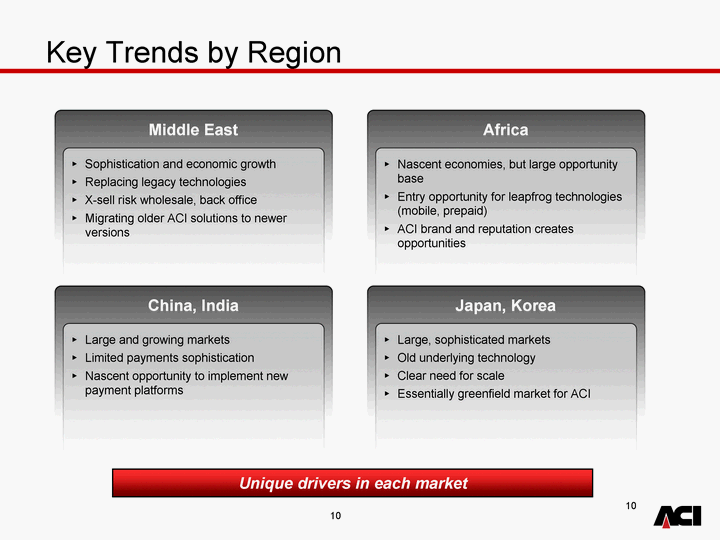
| Africa Nascent economies, but large opportunity base Entry opportunity for leapfrog technologies (mobile, prepaid) ACI brand and reputation creates opportunities Key Trends by Region 10 Middle East Sophistication and economic growth Replacing legacy technologies X-sell risk wholesale, back office Migrating older ACI solutions to newer versions Unique drivers in each market Japan, Korea Large, sophisticated markets Old underlying technology Clear need for scale Essentially greenfield market for ACI China, India Large and growing markets Limited payments sophistication Nascent opportunity to implement new payment platforms |
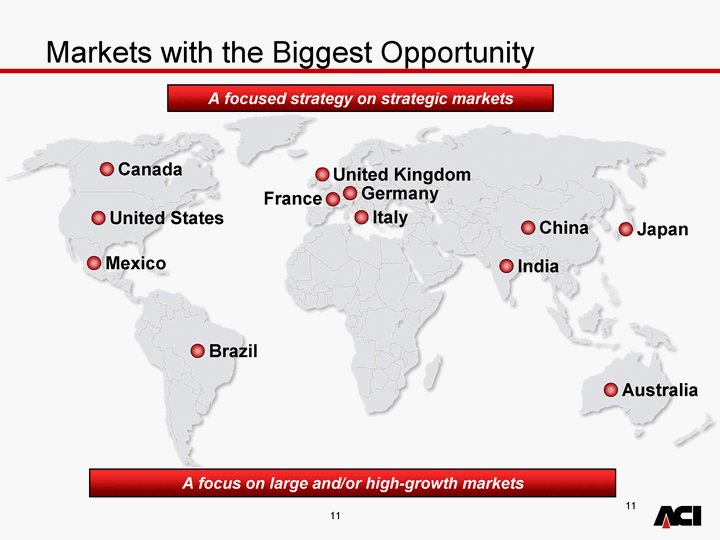
| Markets with the Biggest Opportunity 11 A focused strategy on strategic markets A focus on large and/or high-growth markets United States United Kingdom Canada Japan China Germany Australia France Brazil India Italy Mexico |

| Brazil Very sophisticated payments market Old underlying platform technology in need of change-out Structural advances (e.g. ATM network sharing) are driving change IBM partnership is key in Brazil Key Growth Markets - Americas 12 United States ACI's largest market Electronic payment volumes continue to grow Consolidation has created many redundant payment platforms As players (banks, retailers, processors) get larger, ACI is more easily differentiated Mexico Consolidating banking market creates redundant payment platforms Underlying technology is old, particularly in wholesale payments and back office ACI has a leadership position in retail payments, and strong on-country infrastructure Canada Very sophisticated payments market Old underlying platform technology in need of change-out, particularly in wholesale payments ACI has a leadership position in retail payments and risk management Significant opportunities, especially in wholesale and back office |
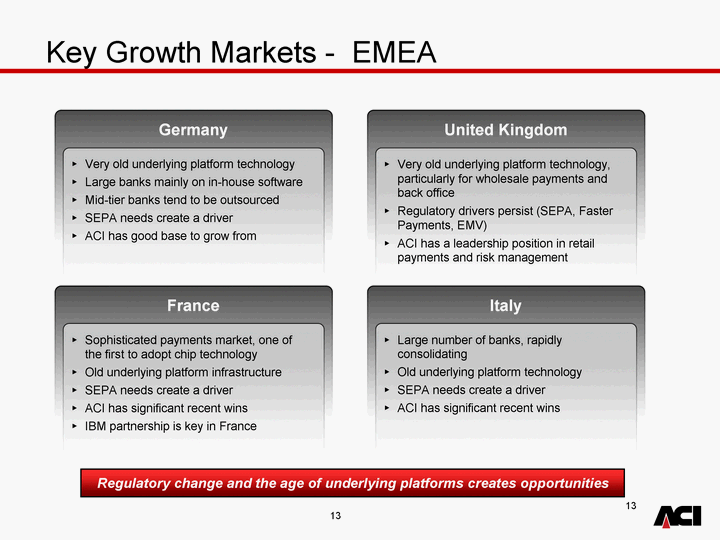
| United Kingdom Very old underlying platform technology, particularly for wholesale payments and back office Regulatory drivers persist (SEPA, Faster Payments, EMV) ACI has a leadership position in retail payments and risk management Key Growth Markets - EMEA 13 Germany Very old underlying platform technology Large banks mainly on in-house software Mid-tier banks tend to be outsourced SEPA needs create a driver ACI has good base to grow from Italy Large number of banks, rapidly consolidating Old underlying platform technology SEPA needs create a driver ACI has significant recent wins France Sophisticated payments market, one of the first to adopt chip technology Old underlying platform infrastructure SEPA needs create a driver ACI has significant recent wins IBM partnership is key in France Regulatory change and the age of underlying platforms creates opportunities |

| Japan Very sophisticated payments market Old underlying platforms in need of change-out Japanese banks' international aspirations will lead them to new solutions ACI will need effective partnerships to penetrate the market, including IBM Key Growth Markets - Asia/Pacific 14 China Relatively limited payments sophistication Fragmented, un-connected payments infrastructure ACI will need effective partnerships to penetrate the market ACI has a strong initial position with Fraud and the Essentis acquisition Australia/NZ Commonwealth banking structure results in a few, very large players Sophisticated payments market, but underlying technology is old, particularly in wholesale payments and back office ACI has a leadership position in retail payments and risk management India Relatively limited payments sophistication Many new entrants to the payments market, many of them U.S.-based ACI has strong retail payments client base and new, direct sales approach ACI has significant opportunities across Asia Pacific |

| The Agile Payments Strategy in Action Be the leading provider of a unified solution that initiates, manages, secures and operates payments to maximize the total economic impact for our customers. Identified key products required for a holistic solution. Deconstructing products into software services. Planning organic and inorganic events to build out services. Software services will create a single platform that breaks down the silos across customers, channels, networks, payment types, and technology vendors. (tm) |
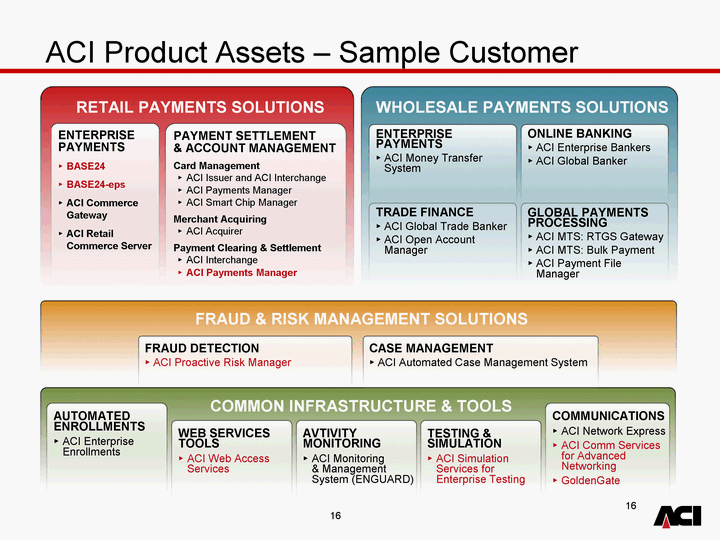
| FRAUD & RISK MANAGEMENT SOLUTIONS FRAUD DETECTION ACI Proactive Risk Manager COMMON INFRASTRUCTURE & TOOLS CASE MANAGEMENT ACI Automated Case Management System COMMUNICATIONS ACI Network Express ACI Comm Services for Advanced Networking GoldenGate RETAIL PAYMENTS SOLUTIONS ACI Product Assets - Sample Customer 16 WHOLESALE PAYMENTS SOLUTIONS ENTERPRISE PAYMENTS BASE24 BASE24-eps ACI Commerce Gateway ACI Retail Commerce Server PAYMENT SETTLEMENT & ACCOUNT MANAGEMENT Card Management ACI Issuer and ACI Interchange ACI Payments Manager ACI Smart Chip Manager Merchant Acquiring ACI Acquirer Payment Clearing & Settlement ACI Interchange ACI Payments Manager ONLINE BANKING ACI Enterprise Bankers ACI Global Banker ENTERPRISE PAYMENTS ACI Money Transfer System GLOBAL PAYMENTS PROCESSING ACI MTS: RTGS Gateway ACI MTS: Bulk Payment ACI Payment File Manager TRADE FINANCE ACI Global Trade Banker ACI Open Account Manager AUTOMATED ENROLLMENTS ACI Enterprise Enrollments WEB SERVICES TOOLS ACI Web Access Services AVTIVITY MONITORING ACI Monitoring & Management System (ENGUARD) TESTING & SIMULATION ACI Simulation Services for Enterprise Testing |
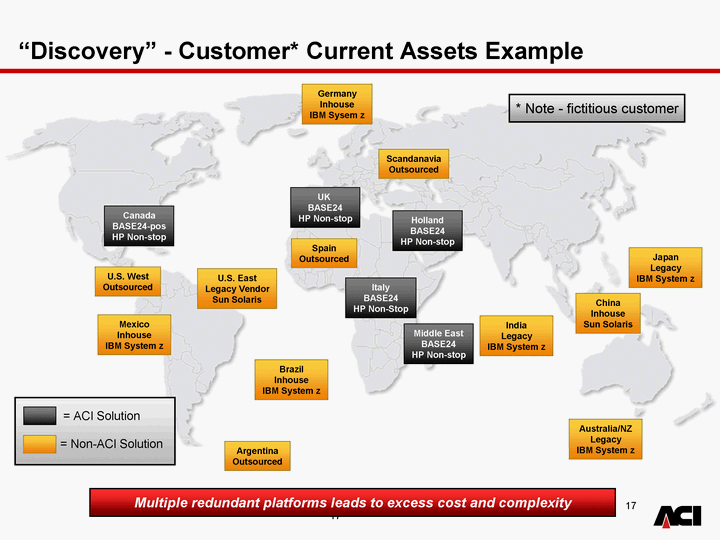
| 17 U.S. East Legacy Vendor Sun Solaris Australia/NZ Legacy IBM System z UK BASE24 HP Non-stop Scandanavia Outsourced Germany Inhouse IBM Sysem z Holland BASE24 HP Non-stop "Discovery" - Customer* Current Assets Example Italy BASE24 HP Non-Stop Canada BASE24-pos HP Non-stop U.S. West Outsourced Brazil Inhouse IBM System z Japan Legacy IBM System z India Legacy IBM System z Argentina Outsourced Spain Outsourced Middle East BASE24 HP Non-stop Mexico Inhouse IBM System z * Note - fictitious customer China Inhouse Sun Solaris = ACI Solution = Non-ACI Solution Multiple redundant platforms leads to excess cost and complexity |

| Clear efficiencies available from regional hub deployment 18 Asia Pacific BASE24-eps PRM, Back Office Latin America BASE24-eps PRM, Back Office "Strawman" - Customer Sample End State North America BASE24-eps PRM, Back Office EMEA BASE24-eps PRM, Back Office Northern Asia BASE24-eps PRM, Back Office |

| Key Benefits to the Customer Reduced overall costs due to the elimination of redundant silos for payments and risk management Increased efficiency through an integrated end-to-end solution Improved time to market for new products and services leveraging next-generation payment technologies Improved revenue opportunities through the provision of fee-based services on a single platform Improved service availability based on ACI's proven capabilities in large-scale, complex environments 19 A highly differentiated value proposition |
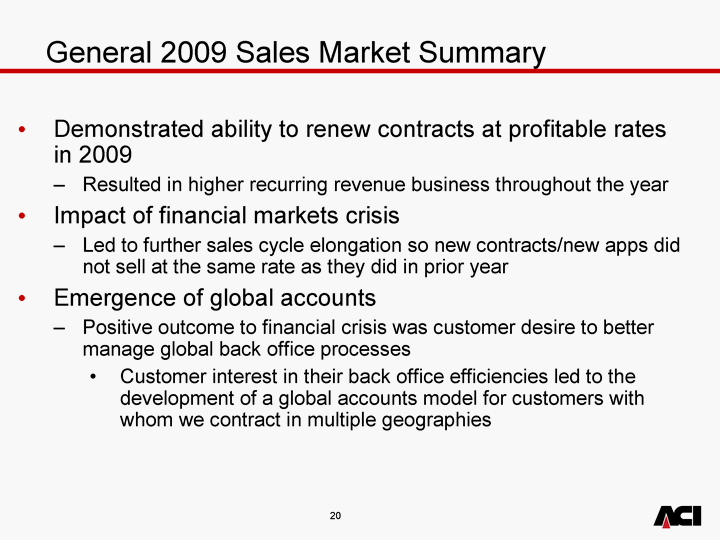
| General 2009 Sales Market Summary Demonstrated ability to renew contracts at profitable rates in 2009 Resulted in higher recurring revenue business throughout the year Impact of financial markets crisis Led to further sales cycle elongation so new contracts/new apps did not sell at the same rate as they did in prior year Emergence of global accounts Positive outcome to financial crisis was customer desire to better manage global back office processes Customer interest in their back office efficiencies led to the development of a global accounts model for customers with whom we contract in multiple geographies |
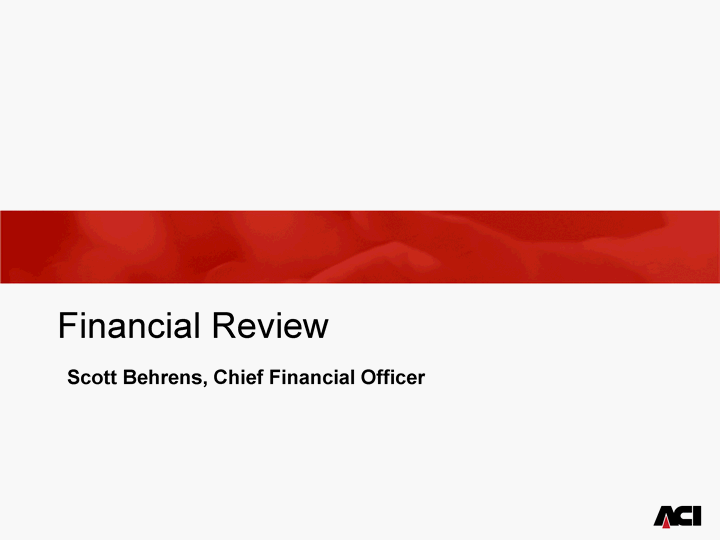
| Financial Review Scott Behrens, Chief Financial Officer |

| 22 22 Calendar Year Revenue Mix 57% 29% 14% 16% 30% 17% 54% 24% 20% 59% 23% 57% 19% 21% 60% $318 $356 $374 $418 $406 $418 - $428 |

| Customer Revenue by Industry Type Reduction in bank/credit union revenue due to variance related to Faster Payments license fees recognized in 2008 'Processor' segment is down due to the significant project completion for Mastercard in 2008 which did not recur in 2009 3% attrition rates across the company, down from 4% in prior year |

| 24 CY 2009 Revenue Concentration 2009 Rank 2008 Rank Channel #1 #15 Americas #2 #1 Americas #3 #2 Global #4 #48 Americas #5 #8 EMEA #6 #6 EMEA #7 #5 Americas #8 #166 Americas #9 #19 Americas #10 #3 Americas #11 #292 EMEA #12 #17 Americas #13 #14 Americas #14 #33 Americas #15 #16 Asia-Pacific #16 #12 Americas #17 n/a Asia-Pacific #18 #21 EMEA #19 #22 Asia-Pacific #20 #28 Americas = Revenue from Top 20 Customers = Revenue from All Other Customers Represents Top 20 out of 749 Customers Top 1 3% Top 5 12% Top 10 20% Top 20 30% Not reliant on an individual customer relationship Top 20 individual customers change from year to year due to significant project completion & renewals year due to significant project completion & renewals year due to significant project completion & renewals year due to significant project completion & renewals |
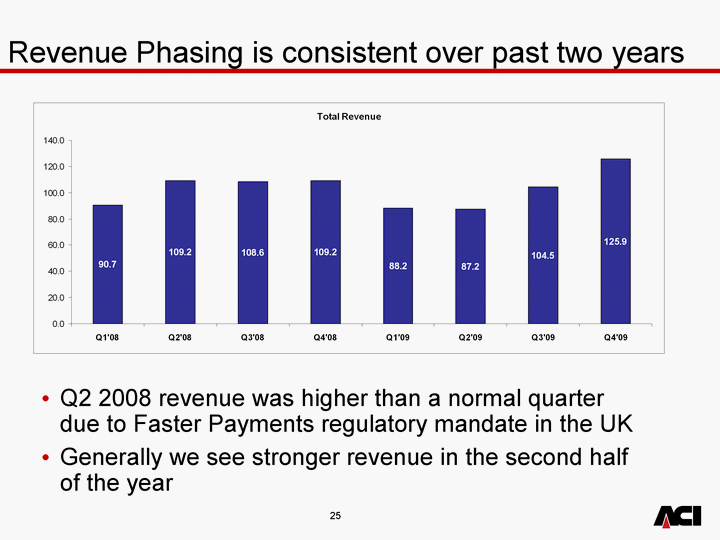
| Revenue Phasing is consistent over past two years Revenue Phasing is consistent over past two years Q2 2008 revenue was higher than a normal quarter due to Faster Payments regulatory mandate in the UK Generally we see stronger revenue in the second half of the year |
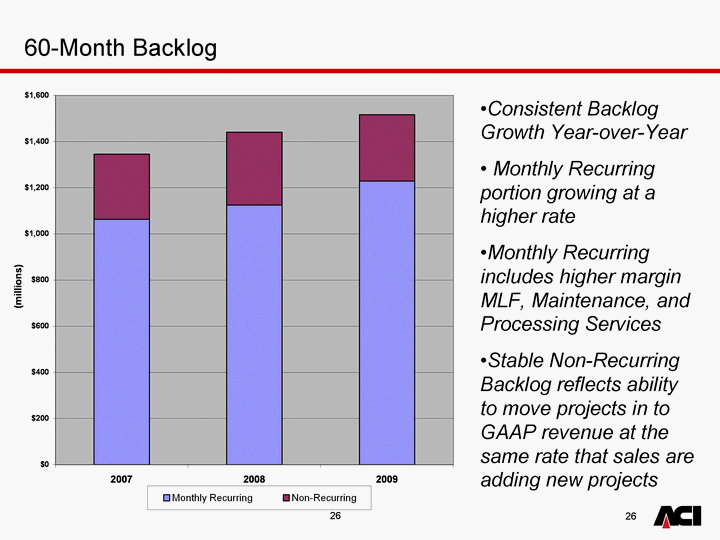
| 26 60-Month Backlog Consistent Backlog Growth Year-over-Year Monthly Recurring portion growing at a higher rate Monthly Recurring includes higher margin MLF, Maintenance, and Processing Services Stable Non-Recurring Backlog reflects ability to move projects in to GAAP revenue at the same rate that sales are adding new projects |

| 27 Relative Attrition by Geography and Product 3% Global Attrition, a reduction from 4% in 2008 Relative Attrition by Channel Americas slightly higher than average EMEA and Asia-Pacific slightly lower than average Relative Attrition by Product Retail payment engine products better than the average Wholesale products at the average Fraud / Risk Management slightly worse than average Non-core products / tools worse than average No Single Geography or Product Area is Currently Experiencing Significant Levels of Attrition |
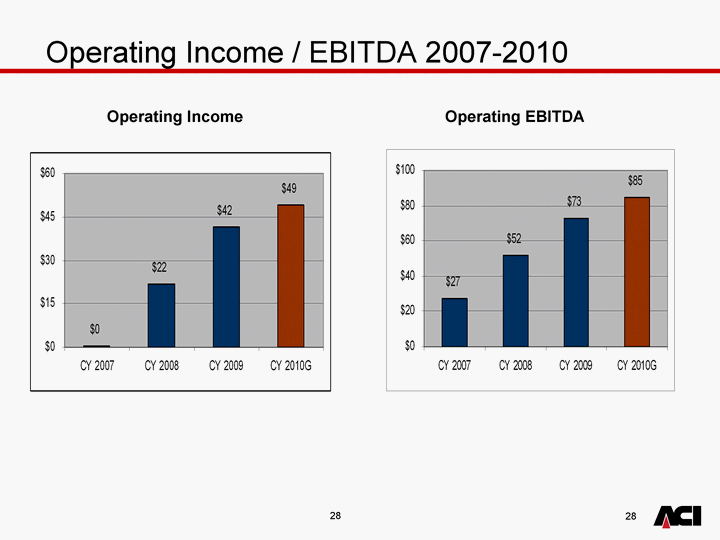
| 28 Operating Income / EBITDA 2007-2010 Operating Income Operating EBITDA Operating EBITDA Operating EBITDA |
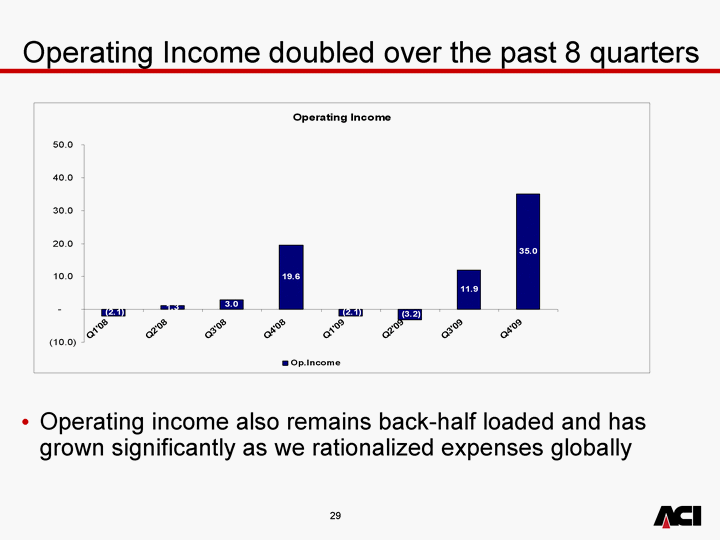
| Operating Income doubled over the past 8 quarters Operating income also remains back-half loaded and has grown significantly as we rationalized expenses globally grown significantly as we rationalized expenses globally grown significantly as we rationalized expenses globally |
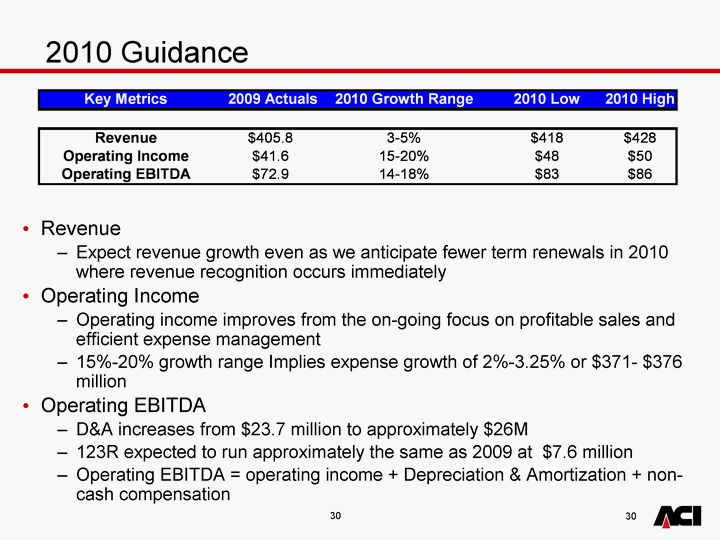
| 30 2010 Guidance Revenue Expect revenue growth even as we anticipate fewer term renewals in 2010 where revenue recognition occurs immediately Operating Income Operating income improves from the on-going focus on profitable sales and efficient expense management 15%-20% growth range Implies expense growth of 2%-3.25% or $371- $376 million Operating EBITDA D&A increases from $23.7 million to approximately $26M 123R expected to run approximately the same as 2009 at $7.6 million Operating EBITDA = operating income + Depreciation & Amortization + non- cash compensation |

| 31 Ongoing Margin Improvement Initiatives ACI's profitability is driven by four main sources of revenue: Maintenance, Application, Services and On Demand. Maintenance Reliable & predictable revenue and cash flow stream Higher maintenance pricing on mature + sunset products or move to newer version Application Increase sales to new customers Cross-sell products to existing customers Services Improve utilization Assess bill rates in all regions Reduce time to implement (standard implementation methodology) On Demand Increase sales to new customers (increase volume) |

| Non-GAAP Financial Measures Management generally compensates for limitations in the use of non-GAAP financial measures by relying on comparable GAAP financial measures and providing investors with a reconciliation of non-GAAP financial measures only in addition to and in conjunction with results presented in accordance with GAAP. We believe that these non-GAAP financial measures reflect an additional way of viewing aspects of our operations that, when viewed with our GAAP results, provide a more complete understanding of factors and trends affecting our business. ACI also includes backlog estimates which are all software license fees, maintenance fees and services specified in executed contracts, as well as revenues from assumed contract renewals to the extent that we believe recognition of the related revenue will occur within the corresponding backlog period. We have historically included assumed renewals in backlog estimates based upon automatic renewal provisions in the executed contract and our historic experience with customer renewal rates. |
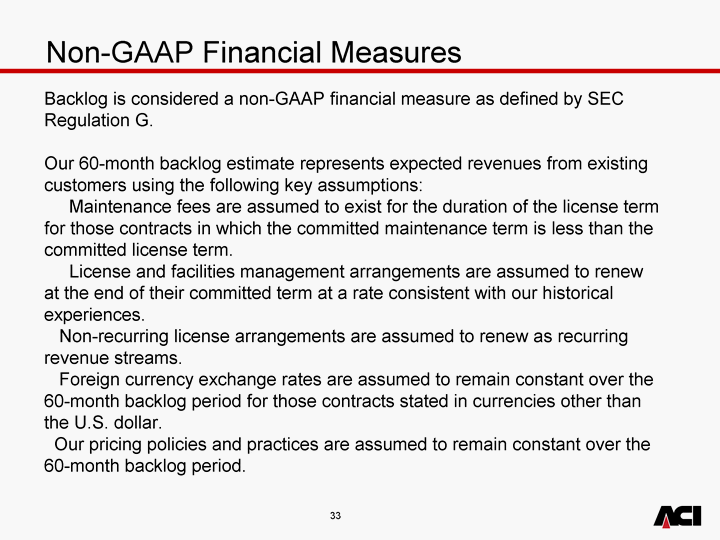
| Non-GAAP Financial Measures Backlog is considered a non-GAAP financial measure as defined by SEC Regulation G. Our 60-month backlog estimate represents expected revenues from existing customers using the following key assumptions: Maintenance fees are assumed to exist for the duration of the license term for those contracts in which the committed maintenance term is less than the committed license term. License and facilities management arrangements are assumed to renew at the end of their committed term at a rate consistent with our historical experiences. Non-recurring license arrangements are assumed to renew as recurring revenue streams. Foreign currency exchange rates are assumed to remain constant over the 60-month backlog period for those contracts stated in currencies other than the U.S. dollar. Our pricing policies and practices are assumed to remain constant over the 60-month backlog period. |
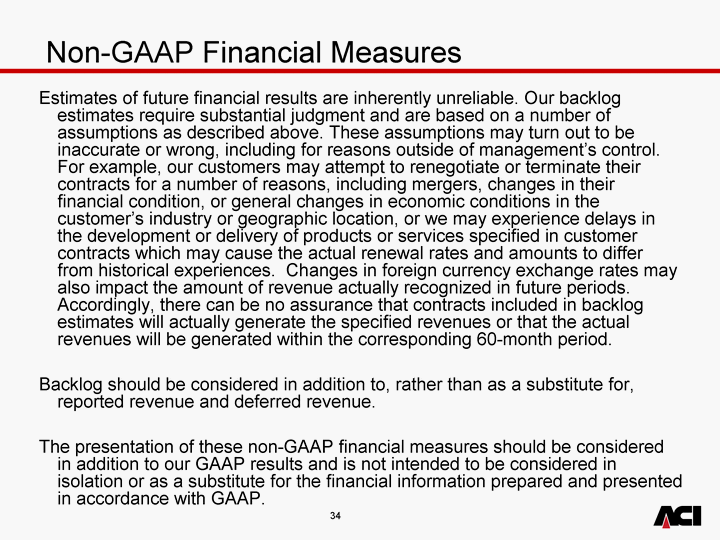
| Non-GAAP Financial Measures Estimates of future financial results are inherently unreliable. Our backlog estimates require substantial judgment and are based on a number of assumptions as described above. These assumptions may turn out to be inaccurate or wrong, including for reasons outside of management's control. For example, our customers may attempt to renegotiate or terminate their contracts for a number of reasons, including mergers, changes in their financial condition, or general changes in economic conditions in the customer's industry or geographic location, or we may experience delays in the development or delivery of products or services specified in customer contracts which may cause the actual renewal rates and amounts to differ from historical experiences. Changes in foreign currency exchange rates may also impact the amount of revenue actually recognized in future periods. Accordingly, there can be no assurance that contracts included in backlog estimates will actually generate the specified revenues or that the actual revenues will be generated within the corresponding 60-month period. Backlog should be considered in addition to, rather than as a substitute for, reported revenue and deferred revenue. The presentation of these non-GAAP financial measures should be considered in addition to our GAAP results and is not intended to be considered in isolation or as a substitute for the financial information prepared and presented in accordance with GAAP. |

| Non-GAAP Financial Measures Operating EBITDA is defined as operating income plus depreciation and amortization and non-cash stock compensation. Operating EBITDA is considered a non-GAAP financial measure as defined by SEC Regulation G. The presentation of these non-GAAP financial measures should be considered in addition to our GAAP results and is not intended to be considered in isolation or as a substitute for the financial information prepared and presented in accordance with GAAP. ($ in millions) Years ended December 31, Years ended December 31, Years ended December 31, 2009 2008 2007 Operating income $ 41.6 $21.7 $0.3 Depreciation and amortization 23.7 22.1 20.8 Non-cash stock compensation 7.6 7.9 5.8 Operating EBITDA $ 72.9 $ 51.7 $ 26.9 |

| Forward Looking Statements This presentation contains forward-looking statements based on current expectations that involve a number of risks and uncertainties. Generally, forward-looking statements do not relate strictly to historical or current facts and may include words or phrases such as "believes," " will," "expects," "anticipates," "intends," and words and phrases of similar impact. The forward-looking statements are made pursuant to safe harbor provisions of the Private Securities Litigation Reform Act of 1995. Forward-looking statements in this presentation include, but are not limited to, statements regarding: Belief that the rise in recurring revenue categories in 2009 demonstrates intrinsic business improvement; Belief that the profitability of the business is significantly improved and that the financial crisis has led to customer desire to better manage global back office process; Expectations regarding opportunities in the Americas, EMEA and Asia-Pacific with respect to cross selling risk products and leveraging retail relationships to sell wholesale and online banking products, expanding our risk footprint in Canada and obtaining new BASE24-eps(r) business, extended support services, migration of Latin American customers to BASE24- eps(r), securing Latin American customer renewals, wholesale solutions, consolidated license renewals with processors and expansion of our system footprint with correlating services, increasing the value of our retail payments proposition with our back office acquisitions and alliances, obtaining key renewals in Northern Europe; growth of our direct model in China, retail and risk opportunities in China, growth of wholesale payments and expansion of our retail footprint in ASEAN; The company's Agile Payments Solution strategy, market perception of this strategy and expectations that this strategy will result in a greater number of customer implementations and enhanced financial results; Expectations regarding our ability to build and manage all synergistic third-party relationships; The company's 12- and 60-month backlog estimates; Expectations regarding 2010 financial guidance, including GAAP revenue, GAAP operating income, operating EBITDA and assumptions regarding other factors impacting our 2010 financial guidance, including sales, expenses and operating free cash flow; and Expectations regarding our cyclical quarterly results and our belief that we will have similar "hockey stick" performance in 2010. |

| Forward Looking Statements (Cont) All of the foregoing forward-looking statements are expressly qualified by the risk factors discussed in our filings with the Securities and Exchange Commission. Such factors include, but are not limited to, risks related to the global financial crisis, restrictions and other financial covenants in our credit facility, volatility and disruption of the capital and credit markets, our restructuring efforts, the restatement of our financial statements, consolidation in the financial services industry, changes in the financial services industry, the accuracy of backlog estimates, the cyclical nature of our revenue and earnings, exposure to unknown tax liabilities, volatility in our stock price, risks from operating internationally, including fluctuations in currency exchange rates, increased competition, our offshore software development activities, the performance of our strategic product, BASE24-eps, the maturity of certain products, our strategy to migrate customers to our next generation products, ratable or deferred recognition of certain revenue associated with customer migrations and the maturity of certain of our products, demand for our products, failure to obtain renewals of customer contracts or to obtain such renewals on favorable terms, delay or cancellation of customer projects or inaccurate project completion estimates, business interruptions or failure of our information technology and communication systems, our alliance with IBM, our outsourcing agreement with IBM, the complexity of our products and services and the risk that they may contain hidden defects or be subjected to security breaches or viruses, compliance of our products with applicable governmental regulations and industry standards, our compliance with privacy regulations, the protection of our intellectual property in intellectual property litigation, future acquisitions and investments and litigation. For a detailed discussion of these risk factors, parties that are relying on the forward-looking statements should review our filings with the Securities and Exchange Commission, including our most recently filed Annual Report on Form 10-K and subsequent reports on Forms 10-Q and 8-K. |

